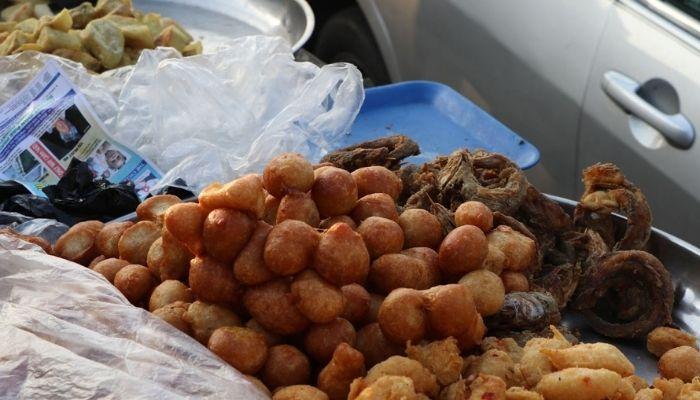Their is growing controversy on the issue of use and reuse of cooking oils especially by roadside food sellers and vendors with experts pointing at use and reuse of cooking oils especially for fries as something to avoid to and escape from health complications.
We present to you below twelve reasons why you should avoid reuse of cooking oils especially in fries to avoid health complications.
-
Oil breakdown and rancidity
Repeated heating oxidises oils. The oil darkens, tastes and smells “off” and forms breakdown products that make food unpalatable and may irritate the gut. -
Formation of toxic oxidation products
High heat and repeated use produce aldehydes and other oxidised compounds. These are chemically reactive and have been associated in studies with inflammation and long-term health risks. -
Increased trans-fat and polar compound levels
Prolonged heating — especially above the oil’s smoke point — raises harmful trans-fat and polar compound concentrations. These substances are linked to poorer heart health when consumed regularly. -
Greater risk of food contamination
Frying different foods in the same oil (meat, fish, starchy snacks) transfers crumbs, water and microbes into the oil. Warm, contaminated oil kept at ambient temperature is a breeding ground for bacteria if food particles are left inside. -
Lower smoke point → more dangerous fumes
Seed oils (sunflower, soybean, groundnut/peanut, canola) vary in smoke point. When overheated they smoke and release irritating and potentially harmful fumes — a hazard for sellers and customers at close quarters. -
Acrylamide and other cooking-byproduct formation in starchy foods
Re-used oil used to deep-fry potatoes, plantain and similar starchy items can contribute to higher acrylamide levels — a chemical compound formed at high frying temperatures linked to health concerns. -
Higher oil absorption — greasier, more calorific food
Degraded oil is absorbed more readily by fried foods. That raises calorie density and the amount of unhealthy fats a regular customer consumes. -
Unstable frying temperature increases danger
Constantly overheating oil to recover temperature (common when many customers are waiting) accelerates oil degradation and increases the chance of burns, flare-ups and fires. -
Appearance and taste problems reduce food safety perception
Dark, blackened oil leaves visible residues on food. Customers may mistake safety measures for poor hygiene — but worse, sellers may simply discard safety to cut costs, lowering overall hygiene standards. -
Economic pressures encourage unsafe reuse practices
Because quality oils are relatively expensive, some sellers reuse oil far beyond safe limits. This cost pressure can encourage shortcuts: mixing fresh oil with old oil, failing to sieve food particles, or storing oil in improvised, unclean containers. -
Lack of clear local guidance and monitoring
Many roadside settings lack easy access to training, thermometers or simple oil-quality checks. Without clear regulation or education, unsafe reuse becomes normal practice. -
Vulnerable groups at higher risk
Children, pregnant women and people with chronic illnesses (heart disease, diabetes) who eat fried foods frequently are more likely to experience the cumulative harms of degraded oil exposure.
Small Checks For Buyers and Users Of Oil
-
Check oil before reuse: if it’s dark, foaming, has a sharp/rancid smell, or smokes at normal frying heat — throw it away.
-
Filter oil after each use to remove crumbs and food particles. Store in a clean, covered container.
-
Avoid mixing different oil types (they have different smoke points).
-
Don’t exceed the oil’s smoke point; use a thermometer where possible (frying usually between 160–190°C depending on food).
-
Limit the number of reuse cycles — for many seed oils, frequent high-temperature reuse is unsafe. If in doubt, replace the oil.
-
Prefer oils with higher stability for repeated frying (and balance health trade-offs — speak to a nutritionist).
-
Sell smaller batches more frequently rather than keeping one large vat of old oil.
-
Educate staff and customers — visible hygiene and safety practices build trust and may allow slightly higher prices for safer food.
Simple, low-cost interventions — vendor training, clear pictorial leaflets, basic oil-quality checks, and periodic market inspections — can greatly reduce health risks without destroying livelihoods. Encouraging vendors to adopt small changes (filtration, temperature control, replacing oil more often) protects both public health and business reputation.





